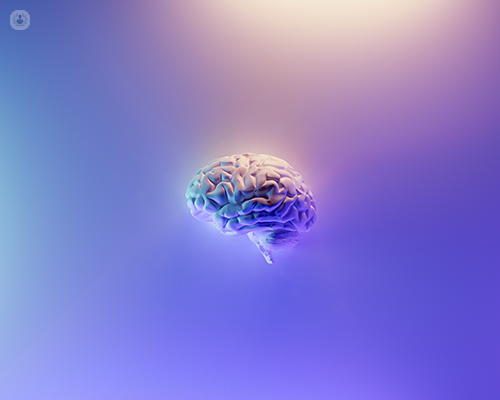A guide to epilepsy
Autore:Epilepsy is the most common serious neurological disorder affecting millions of people worldwide. This condition, characterised by recurrent seizures, has multiple causes, as well as presents with a wide spectrum of symptoms. Renowned consultant neurologist Professor Matthias Koepp explores its principal causes, various seizure types, common symptoms and treatment options.

What is epilepsy?
Epilepsy is a chronic neurological disorder that leads to abnormal brain activity, resulting in recurrent seizures. These seizures can manifest in various forms and may range from mild to severe. The fundamental hallmark of epilepsy is the predisposition to have unprovoked seizures.
Principal causes of epilepsy
Epilepsy can be attributed to a multitude of factors, making it a complex condition to dissect in terms of causation. While the precise cause can often be elusive, several principal factors may contribute to the development of epilepsy:
Genetics: genetic factors play a significant role in epilepsy. Individuals with a family history of the condition are at a higher risk of developing it themselves.
Brain injury, stroke or infection: injuries to the brain can trigger epilepsy, particularly if they result in penetrating injuries or bleeds inside the brain. 20% of all focal epilepsies are due to trauma, stroke or infection.
Brain abnormalities: structural or developmental brain abnormalities, such as tumours or malformations, can lead to epilepsy.
Metabolic disorders: conditions that disrupt the body's metabolic balance, such as diabetes or kidney disease, may raise the risk of epilepsy.
Types of seizures
Epileptic seizures can vary significantly in their presentation and impact. The two main categories of seizures associated with epilepsy are:
Generalised seizures: these seizures affect both sides of the brain and often result in loss of consciousness. They can manifest as tonic-clonic seizures (formerly known as grand mal seizures), absence seizures, myoclonic seizures, or atonic seizures.
Focal seizures: originating in a specific area of the brain these seizures (formerly known as partial or localisation-related) may or may not involve loss of consciousness. These can be further categorised into focal aware seizures (formerly known as simple focal seizures) with preserved awareness or focal seizures with impaired awareness (formerly known as complex partial seizures).
What are the most common signs and symptoms of epilepsy?
The signs and symptoms of epilepsy can vary widely between individuals. However, some common indicators include:
Seizures: the most recognisable symptom, seizures can take many forms, ranging from unusual sensations (tingling in one limb, strange tastes or smells, déjà vu, or unexplainable fear), staring spells, automatisms and muscle twitches to loss of consciousness and bilateral convulsions of all 4 limbs.
Temporary confusion: after a seizure, individuals may experience temporary confusion, disorientation, or memory loss.
Can epilepsy be cured?
Epilepsy, in most cases, is a chronic condition that can be managed but not entirely cured. Some individuals may outgrow their epilepsy, especially if it originates in childhood, but for many, it is a lifelong condition. The focus of treatment is primarily on controlling seizures and improving the individual's quality of life.
What are the best treatment options for epilepsy?
Treatment strategies for epilepsy are tailored to the individual's specific needs. They often include a combination of the following:
Medication: anti-seizure medications (ASMs, formerly known as anti-epileptic drugs (AEDs)) are the most common treatment method, and they help control seizures in 70% of people.
Surgery: in cases where seizures originate in a specific, identifiable area of the brain, surgery may be an option to remove or disconnect that region.
Vagus nerve stimulation (VNS): this involves implanting a device that stimulates the vagus nerve to help interrupt seizures and reduce seizure frequency.
Dietary therapies: ketogenic and modified Atkins diets have shown effectiveness, particularly in children with epilepsy.
Lifestyle modifications: avoiding triggers, maintaining a consistent sleep schedule, and managing stress can also be important components of epilepsy management.
Medications for epilepsy and their side effects
Anti-seizure medications (ASMs) are the primary line of treatment, but they can have also unwanted side effects, which vary depending on the specific medication and the individual's response. Common side effects include drowsiness, dizziness, weight gain or loss, and mood changes. It is essential for individuals with epilepsy to work closely with their healthcare providers to find the most suitable medication and dosage to manage their condition while minimising side effects.
If you would like to book a consultation with Professor Koepp, do not hesitate to do so by visiting his Top Doctors profile today


